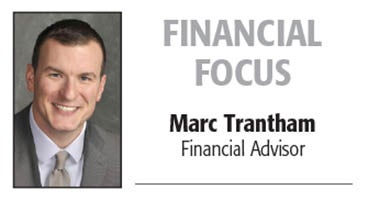Financial Focus: Can you save too much for a rainy day?
Published 4:47 pm Thursday, March 14, 2024
|
Getting your Trinity Audio player ready...
|
By Marc Trantham
Columnist
Save for a rainy day” is an old piece of advice — and a good one. But is it possible to save too much?
To begin with, what defines a “rainy day” in terms of financial needs? It could be any number of things: a temporary loss of employment, a major home or car repair, a large medical bill, and so on.
If you did not have the money readily available to pay for these types of expenses, you might be forced to dip into your IRA, 401(k) or other retirement accounts, incurring taxes and possible penalties, as well as lowering the amount of money you’d have available for retirement. And that’s why it’s a good idea to build an emergency fund containing up to six months’ worth of total expenses, with the money kept in a liquid, low-risk account that’s separate from the accounts you use for your daily spending needs.
An emergency fund is valuable, but many people may be overfunding it. And while this isn’t the biggest financial mistake one can make, it could result in some missed opportunities.
For one thing, when you keep money in a low-risk account, you can generally count on your principal being protected, which means the money will be there for you when you need it —but the flip side is that this money likely won’t grow very much, if at all. And if you’re going to achieve your long-term goals, such as a comfortable retirement, you need your investment portfolio to provide you with significant growth potential within the context of your individual risk tolerance. So, any excess dollars kept in your rainy-day fund might be used to help fuel some growth-oriented investments.
You could also use these dollars to help diversify your investment portfolio. If you only owned one type of investment, your portfolio could take a big hit if a market downturn affected just that asset class. But by owning a mix of stocks, bonds, government securities and other investments, you can help reduce the impact of market volatility. (Keep in mind, though, that diversification, by itself, can’t protect against all losses.)
Still, before deciding on what to do with extra money you might have in your emergency fund, how will you know if you indeed have too much? Up to six months’ worth of total expenses may be adequate for most people — but everyone’s life is different. For example, if you have reason to believe your employment — or that of your spouse — may be in jeopardy in the near future, or if you anticipate the need for some renovations to your home, but not for a year or so, you might want more than six months of expenses tucked away in your emergency fund. Also, once you’re retired, you may well want to keep a year’s worth of expenses in the fund. If you need cash, you don’t want to be forced to sell investments when their price may be down, especially since you have less time for them to recover.
Ultimately, when thinking about how much to keep in your emergency fund, review your situation carefully and weigh as many variables as you can. And if you do decide your rainy-day fund is abundant, use any “overflow” in a way that can help you keep moving toward your financial goals.
This article was written by Edward Jones for use by your local Edward Jones Financial Advisor. Edward Jones, Member SIPC.






